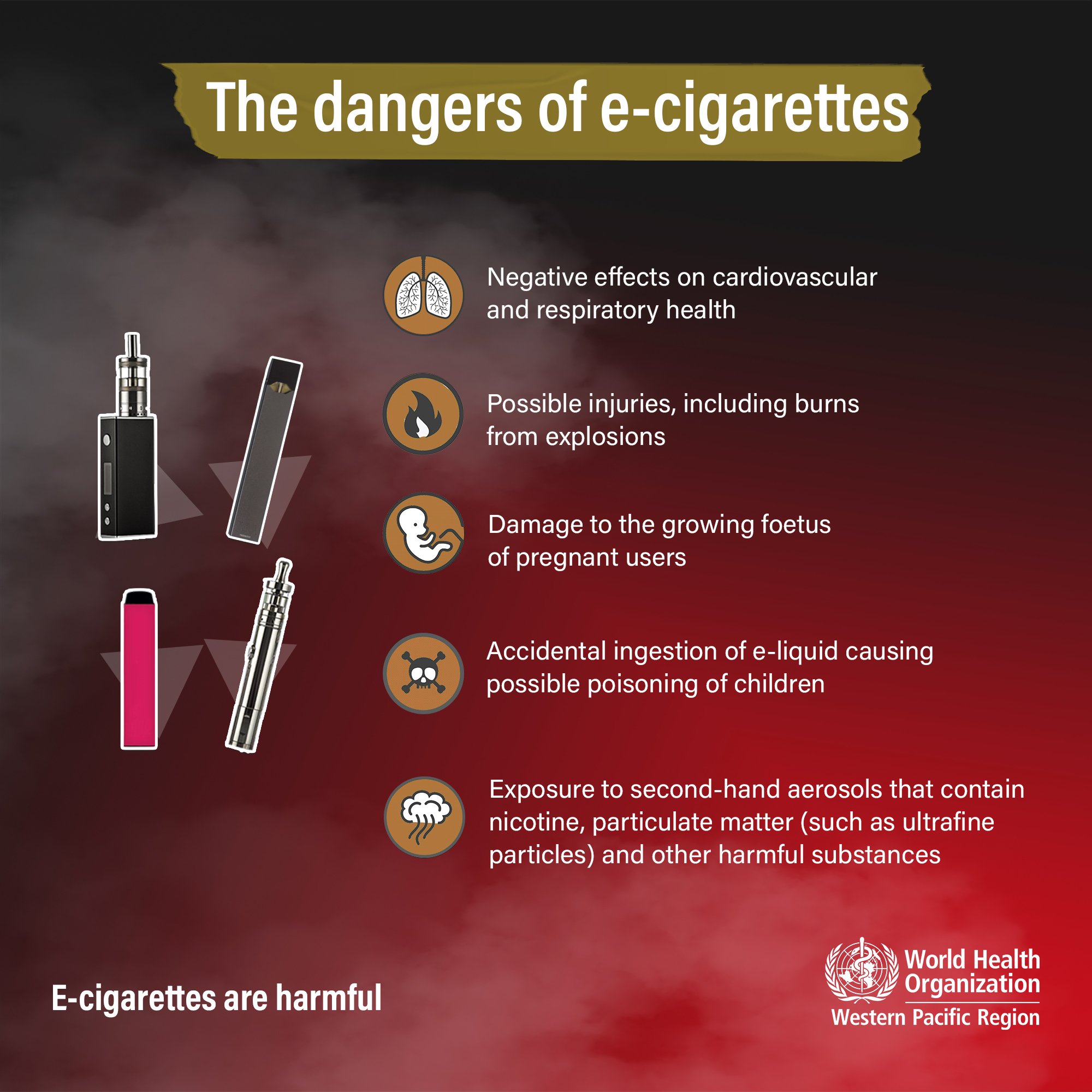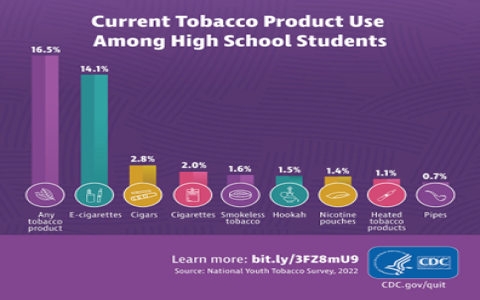Understanding E-cigarette Harm
Electronic cigarettes, commonly known as e-cigarettes or vapes, are not harmless. While often marketed as a safer alternative to traditional cigarettes, they pose significant health risks due to the inhalation of an aerosol, which typically contains nicotine, flavorings, and other chemicals.
Key Harmful Components and Effects
The aerosol produced by e-cigarettes is not merely water vapor. It can contain several harmful and potentially harmful substances:

- Nicotine: This is a highly addictive substance. It can negatively impact adolescent brain development, which continues into the early to mid-20s. Nicotine is also toxic to developing fetuses and can harm pregnant individuals and their babies.
- Volatile Organic Compounds (VOCs): Some VOCs found in e-cigarette aerosol can cause eye, nose, and throat irritation, headaches, nausea, and potentially damage the liver, kidney, and nervous system at certain exposure levels.
- Flavoring Chemicals: Many flavoring chemicals, while safe to ingest, have unknown health effects when inhaled. Some, like diacetyl, have been linked to serious lung diseases such as bronchiolitis obliterans.
- Ultrafine Particles: These particles can be inhaled deep into the lungs and may contribute to inflammation and exacerbate respiratory conditions.
- Heavy Metals: Metals such as nickel, tin, and lead have been detected in e-cigarette aerosol, likely originating from the heating coil or other components of the device.
- Carcinogens: Some chemicals identified in e-cigarette aerosol are known carcinogens (cancer-causing agents), although generally at lower levels than in conventional cigarette smoke.
Specific Health Risks
The use of e-cigarettes is associated with several health risks:
- Addiction: Nicotine’s addictive nature is a primary concern, especially for youth and young adults, who may become dependent.
- Lung Damage: E-cigarette use has been associated with lung inflammation and injury. Cases of severe lung illness, sometimes referred to as EVALI (e-cigarette or vaping product use-associated lung injury), have been reported.
- Cardiovascular Effects: Nicotine can increase heart rate and blood pressure. Some studies suggest that e-cigarette use may be linked to an increased risk of cardiovascular events over time.
- Impact on Vulnerable Populations: Youth, young adults, pregnant women, and individuals with pre-existing heart or lung conditions are particularly vulnerable to the harmful effects of e-cigarettes.
- Dual Use: Many individuals use both e-cigarettes and traditional cigarettes, which can result in exposure to harmful substances from both products.
Conclusion
Electronic cigarettes are harmful to health. They expose users to addictive nicotine and a variety of toxic and potentially carcinogenic chemicals. While some research suggests they may be less harmful than traditional combustible cigarettes for adult smokers who completely switch, they are not safe and pose significant risks, especially to non-smokers, youth, and pregnant women.









